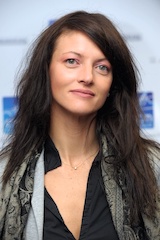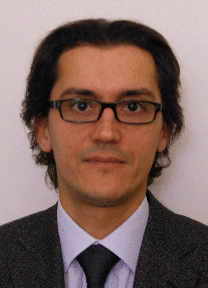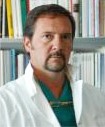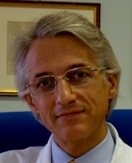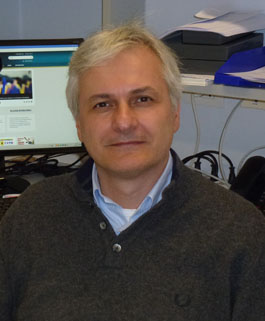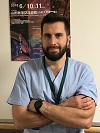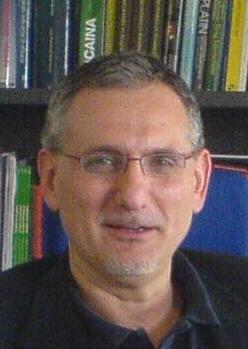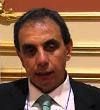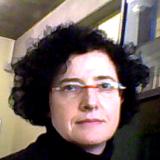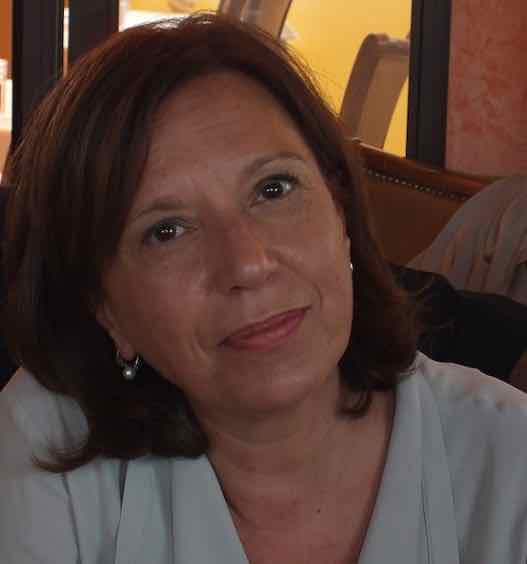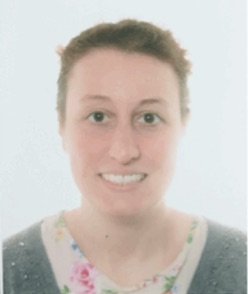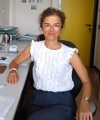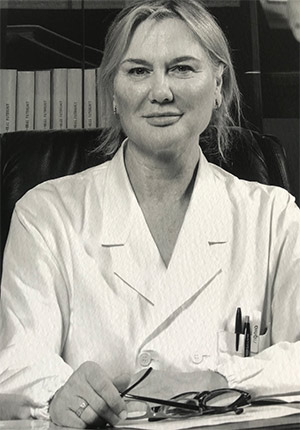Studying at the University of Verona
Academic calendar
The academic calendar shows the deadlines and scheduled events that are relevant to students, teaching and technical-administrative staff of the University. Public holidays and University closures are also indicated. The academic year normally begins on 1 October each year and ends on 30 September of the following year.
Course calendar
The Academic Calendar sets out the degree programme lecture and exam timetables, as well as the relevant university closure dates..
| Period | From | To |
|---|---|---|
| LEZIONI 1° SEMESTRE 2°-3°-4°-5°6° ANNO | Oct 1, 2019 | Dec 20, 2019 |
| LEZIONI 1° E 2° SEMESTRE (INSEGNAMENTI ANNUALI) | Oct 1, 2019 | May 29, 2020 |
| LEZIONI 1° SEMESTRE 1° ANNO | Oct 14, 2019 | Dec 20, 2019 |
| LEZIONI 2° SEMESTRE | Feb 17, 2020 | May 29, 2020 |
| Session | From | To |
|---|---|---|
| SESSIONE INVERNALE A.A. 2018/2019 E 1°SEMESTRE A.A. 2019/2020 | Jan 7, 2020 | Feb 14, 2020 |
| SESSIONE ESTIVA LAUREANDI | Jun 1, 2020 | Jul 3, 2020 |
| SESSIONE ESTIVA A.A. 2019/2020 | Jun 1, 2020 | Jul 24, 2020 |
| SESSIONE AUTUNNALE A.A. 2019/2020 | Sep 1, 2020 | Sep 30, 2020 |
| Session | From | To |
|---|---|---|
| SESSIONE INVERNALE A.A.2018/2019 | Mar 2, 2020 | Mar 13, 2020 |
| SESSIONE ESTIVA | Jul 13, 2020 | Jul 31, 2020 |
| SESSIONE AUTUNNALE | Oct 12, 2020 | Oct 23, 2020 |
| Period | From | To |
|---|---|---|
| FESTIVITA' OGNISSANTI | Nov 1, 2019 | Nov 1, 2019 |
| FESTIVITA' IMMACOLATA CONCEZIONE | Dec 8, 2019 | Dec 8, 2019 |
| VACANZE DI NATALE | Dec 24, 2019 | Jan 6, 2020 |
| VACANZE DI PASQUA | Apr 10, 2020 | Apr 15, 2020 |
| FESTA DELLA LIBERAZIONE | Apr 25, 2020 | Apr 25, 2020 |
| FESTIVITA' DEL LAVORO | May 1, 2020 | May 1, 2020 |
| FESTIVITA' DEL SANTO PATRONO SAN ZENO | May 21, 2020 | May 21, 2020 |
| FESTA DELLA REPUBBLICA | Jun 2, 2020 | Jun 2, 2020 |
| Description | Period | From | To |
|---|---|---|---|
| ATTIVITA' FACOLTATIVA O DI RECUPERO TIROCINIO | ATTIVITA' FACOLTATIVA O DI RECUPERO TIROCINIO | Oct 1, 2019 | Sep 30, 2020 |
| TIROCINIO 1° SEMESTRE ESCLUSI PERIODI DI VACANZA | TIROCINIO 1° SEMESTRE ESCLUSI PERIODI DI VACANZA | Oct 1, 2019 | Feb 15, 2020 |
| TIROCINIO 2° SEMESTRE ESCLUSI PERIODI DI VACANZA | TIROCINIO 2° SEMESTRE ESCLUSI PERIODI DI VACANZA | Feb 17, 2020 | Jul 24, 2020 |
Exam calendar
Exam dates and rounds are managed by the relevant Medicine Teaching and Student Services Unit.
To view all the exam sessions available, please use the Exam dashboard on ESSE3.
If you forgot your login details or have problems logging in, please contact the relevant IT HelpDesk, or check the login details recovery web page.
Should you have any doubts or questions, please check the Enrollment FAQs
Academic staff
 monica.antonello@univr.it
monica.antonello@univr.it
 045 8122470
045 8122470
 mattia.marchiori@univr.it
mattia.marchiori@univr.it
 guido.martignoni@univr.it
guido.martignoni@univr.it
 alessia.pardo@univr.it
alessia.pardo@univr.it
 annarita.signoriello@univr.it
annarita.signoriello@univr.it
Study Plan
The Study Plan includes all modules, teaching and learning activities that each student will need to undertake during their time at the University.
Please select your Study Plan based on your enrollment year.
1° Year
| Modules | Credits | TAF | SSD |
|---|
2° Year activated in the A.Y. 2020/2021
| Modules | Credits | TAF | SSD |
|---|
3° Year activated in the A.Y. 2021/2022
| Modules | Credits | TAF | SSD |
|---|
4° Year activated in the A.Y. 2022/2023
| Modules | Credits | TAF | SSD |
|---|
5° Year activated in the A.Y. 2023/2024
| Modules | Credits | TAF | SSD |
|---|
6° Year It will be activated in the A.Y. 2024/2025
| Modules | Credits | TAF | SSD |
|---|
| Modules | Credits | TAF | SSD |
|---|
| Modules | Credits | TAF | SSD |
|---|
| Modules | Credits | TAF | SSD |
|---|
| Modules | Credits | TAF | SSD |
|---|
| Modules | Credits | TAF | SSD |
|---|
| Modules | Credits | TAF | SSD |
|---|
Legend | Type of training activity (TTA)
TAF (Type of Educational Activity) All courses and activities are classified into different types of educational activities, indicated by a letter.
Pharmacology (2021/2022)
Teaching code
4S01147
Credits
7
Language
Italian
Scientific Disciplinary Sector (SSD)
BIO/14 - PHARMACOLOGY
The teaching is organized as follows:
PARTE 1
PARTE 2
Learning outcomes
Educational objective of the Course of Pharmacology is that students will acquire, through the analysis of the mechanisms of drug action, the ability to consider the drug as a tool to modulate cellular functions directly, or indirectly through activation of compensatory responses, and change the state of health of the patient. The student will be urged to make use of his/her knowledge of physiology and pathology in order to understand how the molecular and cellular mechanism of drug action determines the main therapeutic effect and the side- effects. The student will also be brought to understand that the size and quality of the effects, both desired and undesired, are a function of plasma concentration through the analysis of the pharmacokinetic, and as dose regimen should be adjusted according to the characteristics and liver - kidney functionality of the patient. The course will also teach the student, in an integrated vision, about the knowledge of the characteristics (mechanisms of action, kinetic, adverse reactions, therapeutic use) of different pharmacological classes, with particular reference to the application in dentistry.
Program
Definitions of drug, placebo, medicinal product, packaging, pharmaceutical formulations.
Brief notes on the process of introduction of drugs on the market.
Pharmacodynamics: pharmacological potency, pharmacological effects, clinical effectiveness
Pharmacodynamics: definition of receptor, examples of mechanisms of action. Agonists, antagonists.
Pharmacokinetics: definition and overview of the processes.
The process of absorption and administration routes with advantages and disadvantages.
The process of distribution, plasma protein binding, blood-brain and placental barriers
Pharmacokinetics: drug metabolism the cytochrome P-450, phase I and II metabolism. Factors that may affect the metabolism.
Elimination of drugs: the kidney and other routes of elimination, factors that affect the process of elimination.
Study of blood levels of the drugs. Main pharmacokinetic parameters.
Definition of dose, dosage, treatment duration.
Adverse drug reactions
Interactions among drugs
Classification of drugs: the therapeutic categories
Antibacterial and disinfectant
NSAIDs
Corticosteroids
Autonomic nervous system drugs: anticholinergic, antiadrenergic, sympatholytic
Medicines for the respiratory system: bronchodilators, mucolytic, antitussive
Medicines to control blood pressure
Cardiovascular drugs and antiarrhythmic
Psychopharmacological: antidepressants, antipsychotics, anxiolytics, opioid analgesics
Local anaesthetics
Drugs and substances of abuse
Bibliography
Examination Methods
The oral exam consists of a series of questions concerning the main parts of the program related to Pharmacodynamics, Pharmacokinetics and Pharmacotherapy, in particular on topics of relevance for the CdL. Some clinical cases will be briefly discussed to assess student's logical reasoning.
The student must demonstrate both the learning of the topics taught in class and the ability to expose them in a formal manner. The oral exam lasts about 30 minutes.
Free choice courses
Modules not yet included
Career prospects
Module/Programme news
News for students
There you will find information, resources and services useful during your time at the University (Student’s exam record, your study plan on ESSE3, Distance Learning courses, university email account, office forms, administrative procedures, etc.). You can log into MyUnivr with your GIA login details: only in this way will you be able to receive notification of all the notices from your teachers and your secretariat via email and soon also via the Univr app.
Gestione carriere
Graduation
Documents
| Title | Info File |
|---|---|
|
|
pdf, it, 288 KB, 11/08/22 |
|
|
pdf, it, 305 KB, 24/03/22 |
|
|
pdf, it, 138 KB, 21/06/23 |
|
|
pdf, it, 379 KB, 24/03/22 |
Student login and resources
Sbarramenti
Documents
| Title | Info File |
|---|---|
|
|
pdf, it, 431 KB, 21/06/23 |
|
|
pdf, it, 292 KB, 21/06/23 |
Riconoscimento carriera pregressa
Documents
| Title | Info File |
|---|---|
|
|
pdf, it, 1215 KB, 21/06/23 |
Obblighi formativi aggiuntivi
Documents
| Title | Info File |
|---|---|
|
|
pdf, it, 275 KB, 21/06/23 |












